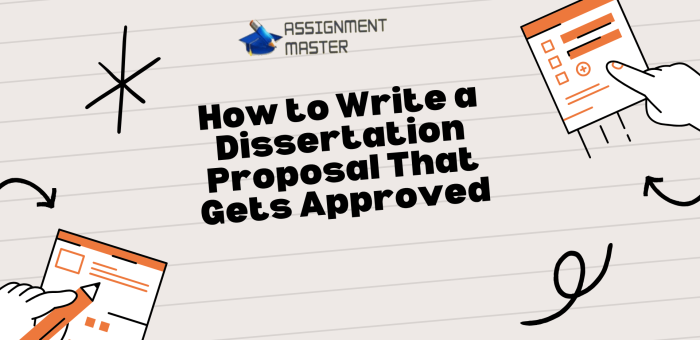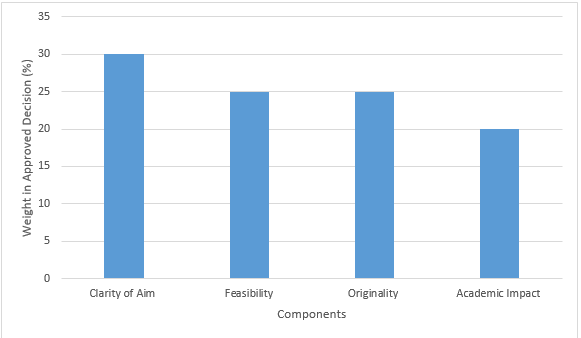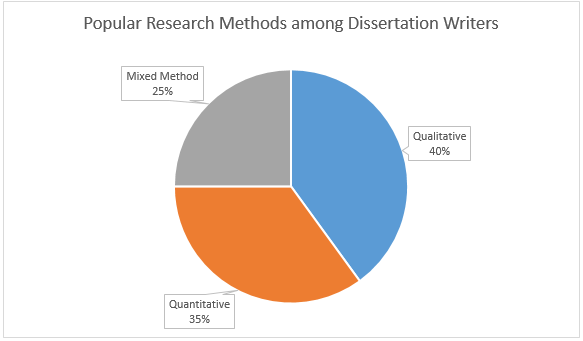
How to Write a Dissertation Proposal That Gets Approved
Have you ever thought why your friend got his dissertation approved on the first try while you faced rejection with endless revisions?
The secret is the way you have crafted your proposal. A dissertation proposal is not just a formality, but a roadmap of your research journey. It helps you convey to your committee members that your topic is worthy of exploration.
Being an important part of the academic journey, some students still struggle with writing a proposal. This blog is a solution to the problem. It will break down the process of proposal writing in a straightforward manner, allowing you to overcome all the challenges and submit a well-organized file.
A Beginner’s Guide to Writing a Dissertation Proposal
A dissertation is one of the important parts of the academic journey. You must complete it to receive your degree. Writing it requires a proper layout. Therefore, professors often ask for the proposal before the main file. Let’s see how we can write your proposal so that it is accepted on the first try.
Step#1: Understand the Purpose of the Dissertation Proposal
Before you pick up a pen or type a word on the laptop related to the proposal, you need to know why the proposal exists. It is not just stating your topic, but proving that your research is original, feasible, and valuable.
Some of the key points you need to understand include:
- Be clear with your aim and tell your readers the reason you chose this topic.
- Provide proof that you will be able to complete your research in the given time with all the resources available.
- Highlight that your work will benefit the community and add value to your field.
- Explain the reasons why your work will benefit others academically or practically.

Step#2: Choose a Topic and Refine It
The topic is the heart of your proposal. Therefore, ensure that you invest your time in selecting it. If you think that you are either confused with the topic you have chosen or need some guidance to finalize one, never hesitate to consult experts. Services like a Dissertation Proposal Writing Service are always ready to help you. Some of the tips that can help you with your selection include:
- Pick something that you are genuinely interested in.
- Look for the gaps in your field that need to be focused on.
- Make sure that you have access to all the resources and tools for the data collection.
- Avoid being too broad or too narrow in topic selection.
|
Topic Idea |
Research Gap | Resources Available |
Scope Manageable |
| Topic A | High | Yes | Yes |
| Topic B | Low | No | No |
| Topic C | Medium | Yes | Yes |
Step#3: Conduct a Preliminary Literature Review
Before you begin your writing, you must know what has already been done in your area. For this, you need to review the literature. Some of its benefits are:
- Identify all the gaps and look for the areas where it can add value.
- Avoid repeating past work.
- Provide a proper context so it can be part of the academic conversation.
- Build its credibility.
|
Source Type |
Examples |
Purpose |
| Academic Journals | JSTOR, Science Direct | In-depth research articles |
| Books | Subject-specific textbooks | Broader theoretical frameworks |
| Reports | Industry or government reports | Real-world data and trends |
Step#4: Begin with an Introduction
The introduction of the proposal must be attention-grabbing, providing a complete context of your study. Things that must be part of the introduction include:
- A brief outline of the field and its importance.
- Discuss the specific issue you will address.
- State all the questions clearly, and the data you will collect will answer them.
- And, the significance of the research.
Step#5: Define the Objective of the Research and the Questions
When you have clear objectives, it keeps your research focused, and the research questions guide your investigation. What are the rules to frame these questions?
- You must be specific and avoid all the vague goals like “to study” or “to explore”.
- Use measurable objectives that can be evaluated after completing them.
- Be realistic in terms of data collection. Ensure that the sources you have access to can help you collect data.
- Link all your questions and objectives to the problem statement and use them in filling in the research gap.
Step#6: Outline the Research Methodology
In this section of the proposal, you will disclose the ways you will collect your data. You must talk about these in this section.
- A research design, such as qualitative, quantitative, or mixed methods, will be used.
- Your data collection tools include surveys, observation, or interviews.
- The sampling method to select the participants for your study.
- And the technique you will use to interpret your findings.

Step#7: Create a Timeline for Manageable Tasks
Writing a proposal without a timeline is considered incomplete. Your committee is interested in knowing how you will manage your time. For this, effective planning is essential. But how can we create our timeline?
- You must break down your sections, like the literature review, data collection, and analysis, into manageable chunks.
- Be realistic when setting a deadline, like a literature review cannot be completed in one sitting.
- Use tools or a manual method to set your schedule.
- Leave some time for the feedback and editing process.
The table below provides an example of the timeline breakdown for a six-month period.
| Month |
Task |
| 1 | Literature Review |
| 2 | Finalize Methodology |
| 3-4 | Data Collection |
| 5 | Data Analysis |
| 6 | Writing and Final Submission |
Step#8: Talk about the Ethical Considerations
Ethics is an essential component of academic research, particularly when data must be collected from individuals or animals as participants, or when sensitive data is involved. When you hire professionals for Dissertation Help, they always emphasize this section strongly. A mistake in this can lead to a higher chance of being rejected. Some of the common ethical considerations you need to take care of include:
- Get the consent signed and ensure that your participants know their role.
- Make sure that all the personal data is being safeguarded.
- Avoid all kinds of bias.
- If you are using an institution or location for data collection, make sure that you have asked for permission to use their premises.
Ethics is an essential component of academic research, particularly when data must be collected from individuals or animals as participants, or when sensitive data is involved. When you hire professionals for Dissertation Help, they always emphasize this section strongly. A mistake in this can lead to a higher chance of being rejected. Some of the common ethical considerations you need to take care of include:
- Get the consent signed and ensure that your participants know their role.
- Make sure that all the personal data is being safeguarded.
- Avoid all kinds of bias.
- If you are using an institution or location for data collection, make sure that you have asked for permission to use their premises.
Step#9: Work On the Bibliography
The bibliography list at the end of the research will reflect your in-depth study of the topic and the collection of information aligned with the task. Things to check in this section include:
- Use reliable sources such as journals, articles, or books.
- Following a citation style that the institution is recommending.
- Keep updating the list as you access more sources.
- At the end, arrange it in alphabetical order.
Step#10: Review, Edit, and Proofread
Even when it is not your first time as a research proposal writer, there can be errors or some unclear context. Edit your file and proofread it. Maintain a checklist and cross out all the areas that you have checked. Your list must include:
- Checking for grammar and spelling. Either choose a manual method or use some available online tools.
- Check if there is a logical flow between the ideas, and the paragraphs are connected.
- Use the formatting technique recommended in the instruction section.
- Remove all the unnecessary details.
FAQs
How is a dissertation proposal important in academic writing?
The proposal will outline your plan for securing approval before you dig into writing your dissertation.
How long must a proposal be?
It can range from 1,500 to 3,000 words, depending on the guidelines provided by your institution.
What sections must be in the dissertation proposal?
Your proposal will contain an introduction, a literature review, objectives, methodology, ethical considerations, a timeline, and a bibliography section.
What is the key to making the proposal stand out?
Choose a topic that is unique with a solid literature review. Ensure that your methodology is clear and your writing is concise, error-free, and well-organized.
The Final Comment
When you follow a guide to write your dissertation proposal, you can make the process less challenging. Just understand the purpose and choose a strong topic. Review the existing literature review and outline your clear objectives to set a solid foundation.
Use a strong methodology, and break down your task into manageable chunks by setting a timeline. Ensure that you have followed the ethical consideration rules and that your participants have signed a form when they participate in the research.
At the end, maintain a bibliography list to let your committee know the sources you have used as part of the research. Check for errors, edit them, and proofread your file before submitting. The proposal is not just a requirement; it is a step towards a significant academic achievement. Invest your time and attention in its writing. Let your research journey start with confidence and clarity.

Leave a Reply